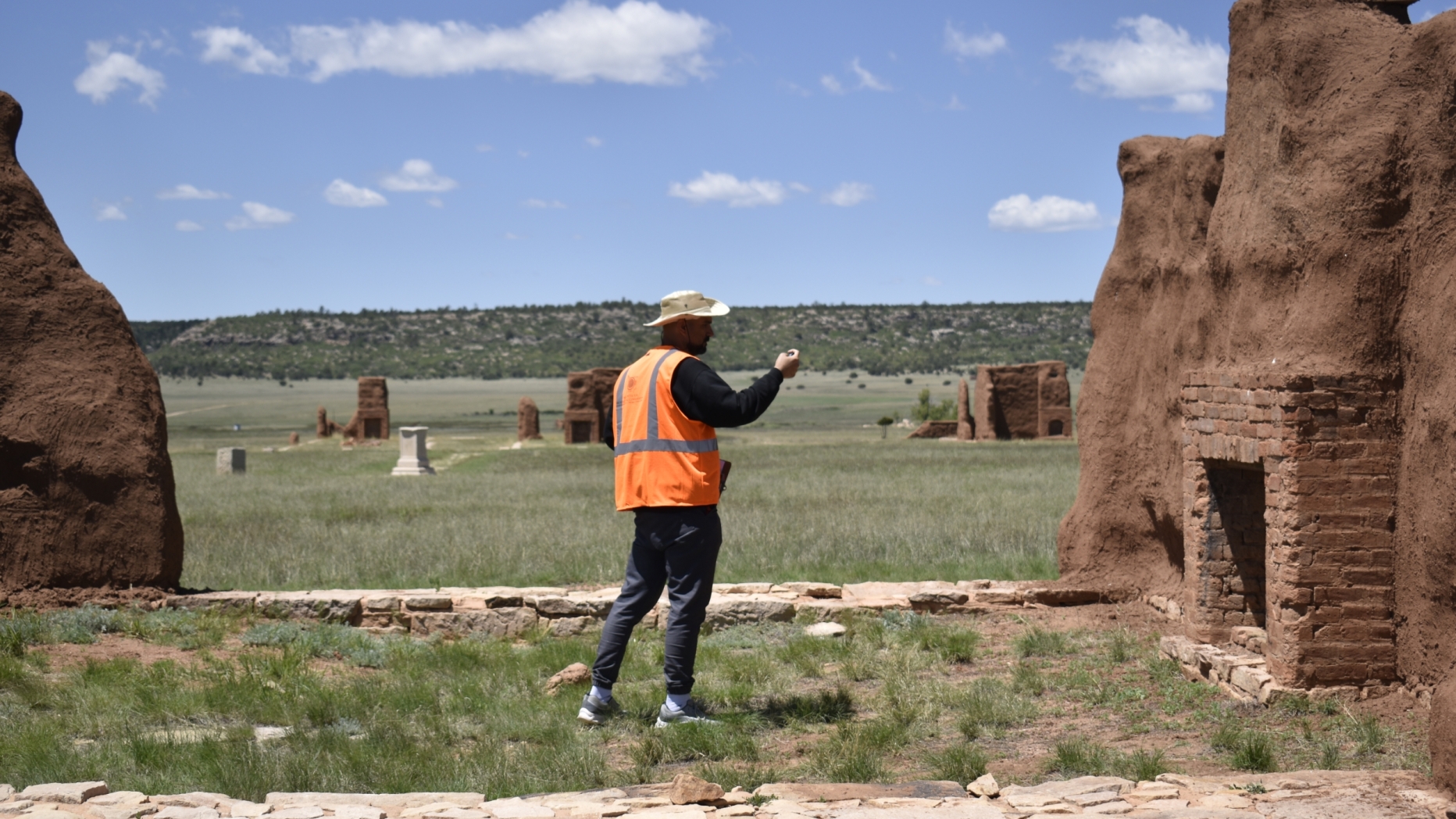Mojtaba Saffarian | Center for Architectural Conservation

Field discussion about the process of condition assessment at WUPATKI National Monument.
Stuart Weitzman School of Design
102 Meyerson Hall
210 South 34th Street
Philadelphia, PA 19104

Field discussion about the process of condition assessment at WUPATKI National Monument.
This past summer, I was part of a team from the Center for Architectural Conservation (CAC) to work on two projects in the West. The first was the Fort Union National Monument in New Mexico, a vast site of remaining ruins from the construction of adobe walls on stone foundations dating from around 1850. It was a project that CAC has been engaged in for the past years. In general, our team had two main responsibilities for this year.
1. Accomplishing the third stage of the Rapid Assessment Survey (RAS) for adobe walls. It was a set
of designed questions in Survey123 that the team did it using a tablet/smartphone.
2. Figuring out methods to assess stone foundations.
Through this process, initial days were assigned to discuss and brainstorm about the appropriate methods to assess the stone foundations. The results of the discussions were designing another RAS specifically for the stones and identification of the foundation's typology. Simultaneously, our team accomplished the third stage of the RAS for adobe walls, which had been done twice through different teams in 2019 and 2022. The goal of doing a survey for the third time was to have data from different teams in different years to examine if the designed method (RAS) can work appropriately. After that, I began to work on the gathered data from three years in the office to find any possible interconnectedness between the data. Identifying the foundations' typology through their caps and drawing several charts and graphs were the initial result of my job at the end of the internship. The second project was the Wupatki National Monument located in Arizona, remains of a stone enclosure from more than 1000 years ago. In this project, I was responsible for assessing the condition of the stone walls. Indeed, Wupatki was a project that I have been engaged in for the past year by working on its photogrammetry in CAC, which resulted in having tens of images of walls that we needed for this year to accomplish condition assessment using them. Therefore, having several markers in the pocket, a wall image in acetate, and a hat were my tools to assess more than 20 walls in the field. The second part of my job was exploring the heritage data and creating a set of documents for each wall to examine any changes and conservation activities that had been done by then. And the last part was transferring the hand drawing with AutoCAD.
Through working on these two projects, I can summarize a few key points I've learned below.
• Brainstorming is an important part of understanding different aspects of a project.
• Definitions are important. To make understandable the goals of the job, it is important to define
a clear glossary for both us and other stakeholders.
• Repetitive work is part of the preservation of the sites like these two with similar materials and
constructions. We should learn to be patient!
• As we had already learned in the course Conservation Science, water and weathering are one of
the first enemies in our field!
• Many evaluations should be done over several years. Therefore, it is important to learn how to
design surveys, gather information, and work on the data, as we were taught in the course
Digital Media.